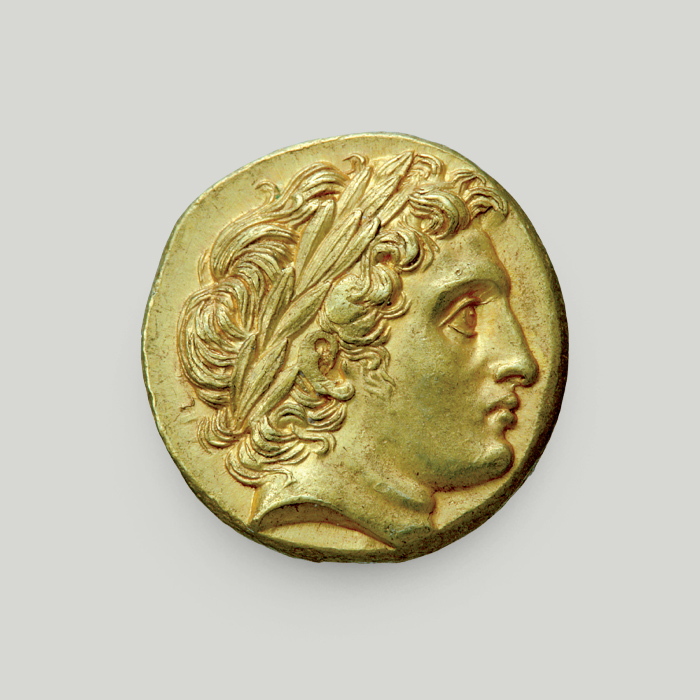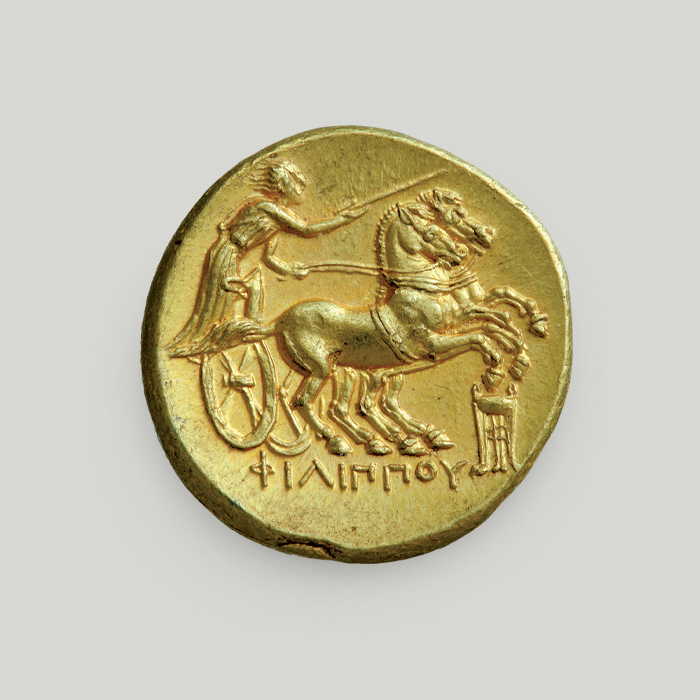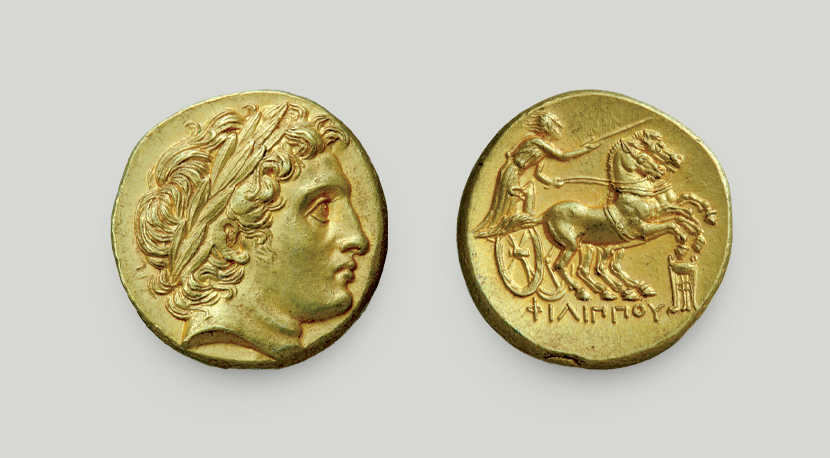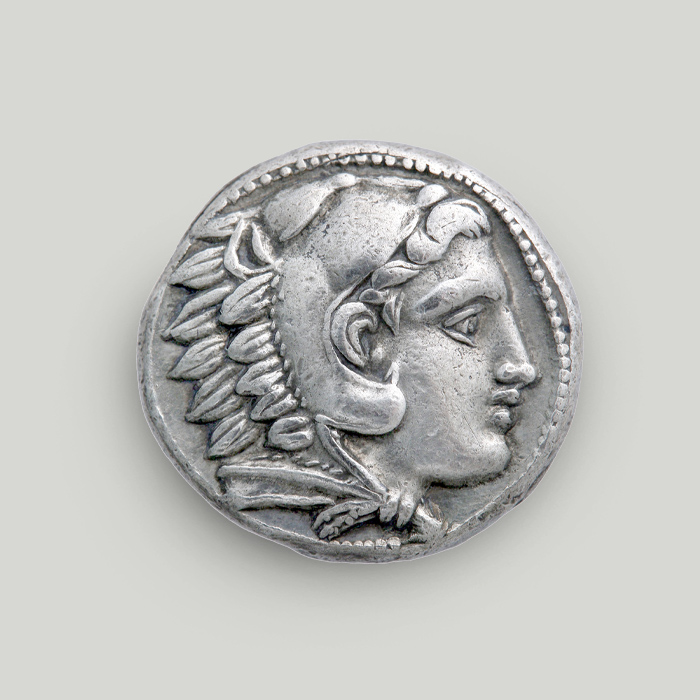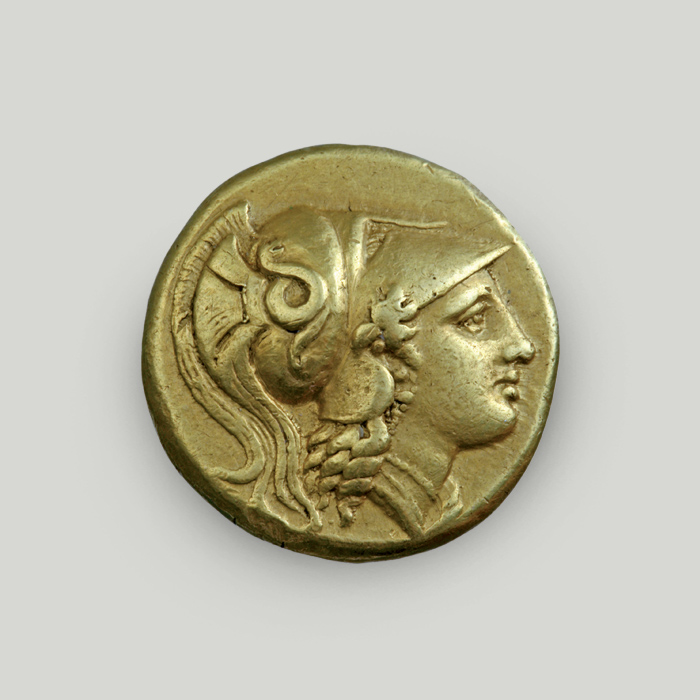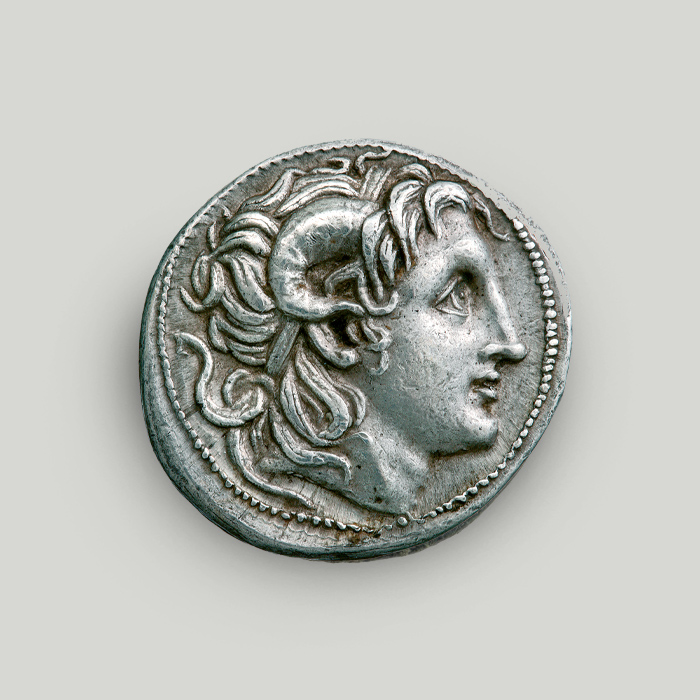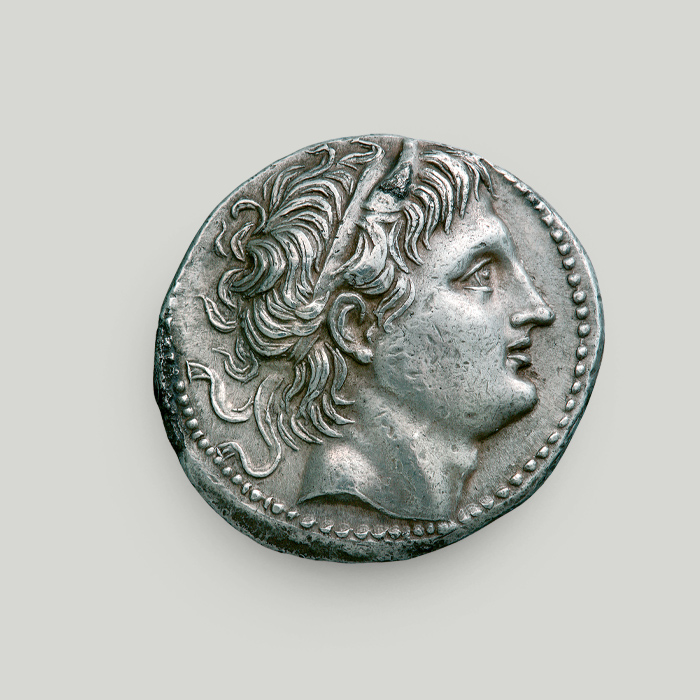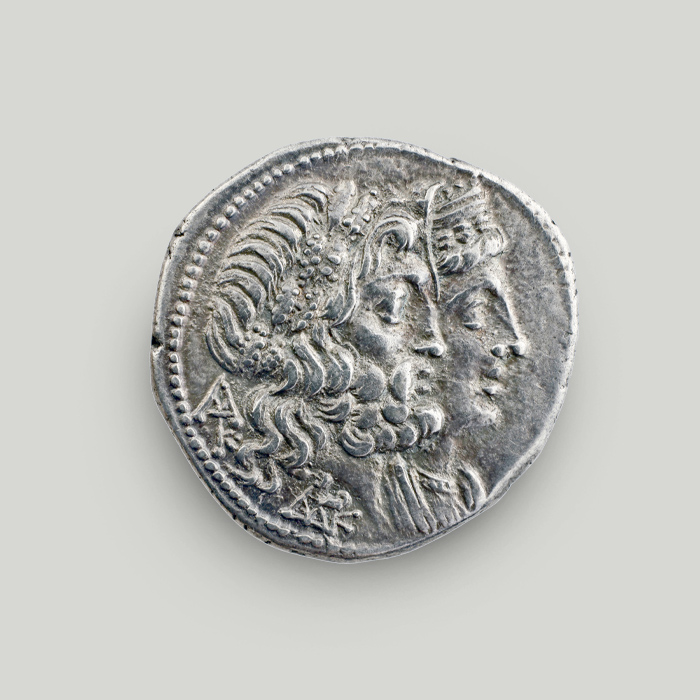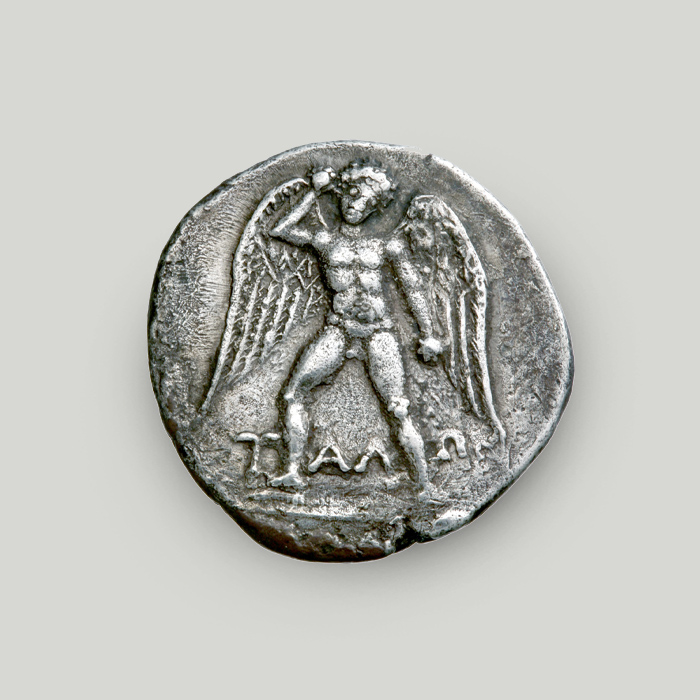Gold stater of Philip II, Macedon
The gold stater of Philip II of Macedon was issued in the 4th century BCE and had become known as the “Philippian stater” already in antiquity. It is the first gold coin ever to be minted in Europe and circulated for decades. Some barbaric tribes in the North issued imitations of the gold and silver coins of Philip II long after the original coins had been discontinued.
Obverse
Head of Apollo wearing a wreath in profile facing right.
Reverse
Charioteer holding the reins while driving a 2-horse chariot. A tripod is depicted under the horses’ hooves. The legend at the bottom reads ΦΙΛΙΠΠΟΥ (of Philip).
Macedon, a force to be reckoned with
Philip’s ascension to the throne in 359 BCE heralded a better era for the Kingdom of Macedon, following a period of misgovernance and destructive invasions from the North and Athens.
Philip II was a charismatic leader. His military genius and diplomatic skills contributed to making Macedon the prevailing power in the Haemus (now Balkan) Peninsula.
Philip reorganised the army divisions, established the use of new spears called sarissae and introduced the Macedonian phalanx, an innovative infantry formation.
Having defeated all the enemies in the West and North, he was free to march East. He founded the city of Philippi, the first Greek city to be named after a king.
To ensure that the needs of his military campaigns would be met, he conquered the city that commanded the gold mines of Mt. Pangaion. Thanks to the precious metal produced in the mine, Philip II was able to issue coins in vast quantities.
The introduction of bimetallism in Macedon
Philip II was the first king to introduce bimetallism in Macedonian minting practices. This means that, in addition to the existing silver coins used until then, gold coins were also issued at the same time. Philip issued numerous series of silver and gold coins.
In 345 BCE he issued gold staters in copious quantities according to the Attic weight standard. This means each stater weighed about 8.64 g.
His purpose was to displace the gold daric, i.e. the Persian stater, from the markets. Philip was successful and his now powerful currency became extremely popular with the markets of southern Greece, Asia Minor and the regions around the Danube.
Some barbaric tribes in the north issued imitations of the gold and silver coins of Philip II long after the original coins had been discontinued.
The Philippian stater
The golden coin issued by Philip II became known as the “Philippian stater” already in antiquity.
It is the first gold coin ever to be minted in Europe and circulated for decades. Its issue continued even after Philip’s death.
Philip II as an Olympic champion
Philip II was the first Macedonian king to be crowned an Olympic champion, and this was thanks to his fine, swift horses.
He was victorious 3 times at the Olympics, in different races:
- Horse racing in 356 BCE.
- Chariot racing (4-horse) in 352 BCE.
- Chariot racing (2-horse) in 348 BCE.
He was so proud of his last victory that he made the victorious chariot the type on the reverse of his gold staters. This is how he chose to spread the news of his glorious victory.
The significance of Apollo
The head of Apollo on the obverse is inspired from the coins of Amphipolis and the Chalcidian League.
Apollo is clearly mentioned also due to Philip’s role as leader of the Delphic Amphictyony, a religious association of 12 tribes from Thessaly and Central Greece. The league had control over the estate and operation of the temple of Apollo at Delphi. Even though it started out as a religious association, it acquired political power later on.
Staters in antiquity
The word “stater” corresponds to an ancient coin denomination. Etymologically, it is derived from the Phoenician schequel, which denoted a coin weighed to comply with a specific standard.
The weight of a stater varied significantly by region, and according to the weight standard applied by the mint.
The coin in our publications
The gold stater of Philip II is mentioned in the book Coins of Macedonia in the Alpha Bank Collection by Dr Dimitra Tsangari. The book discusses coinage in Macedonia and includes photographs of 171 coins with detailed explanatory texts.
Buy the publication Coins of Macedonia in the Alpha Bank Collection on the Alpha Bank e-shop.
The Alpha Bank Numismatic Collection is not open to the public.
Research visits to the Numismatic Collection can be organised upon request.
Contact us to book your visit.
